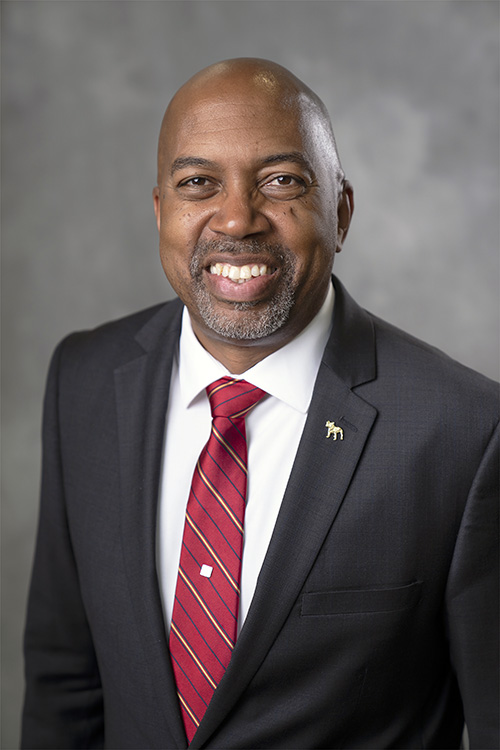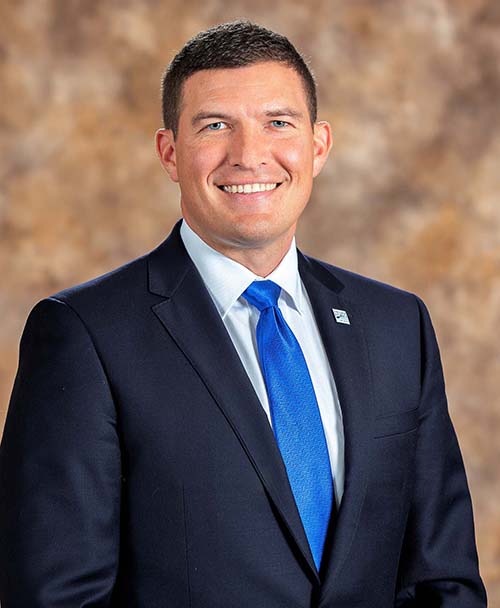
Ferris State University President Bill Pink
Michigan must build a lifelong education system focused on future-ready skills and competencies to thrive, with higher education more accessible and affordable so that the state can increase its population in the decades ahead, according to a report issued today (Dec. 14) by the Growing Michigan Together Council.
Ferris State University President Bill Pink and Henry Ford College President Russ Kavalhuna are co-chairs of the Council’s higher education workgroup, which helped compile recommendations to Gov. Gretchen Whitmer, the state House of Representatives and the state Senate today.
“As co-chairs of the higher education workgroup, we applaud the work of the Growing Michigan Together Council and the strategies it has put forward,” Pink and Kavalhuna said. “We’re proud to see numerous ideas generated by our workgroup in the final report, and while we are incredibly appreciative to all the work thus far, the next phase is incredibly important to our state. It’s time to come together and get to work.”
The report, available at growingmichigan.org, examines Michigan’s challenges and outcomes, its competitiveness to faster-growing peer states and outlines growth-oriented strategies to reverse population trends.

Henry Ford College President Russ Kavalhuna
The Council worked closely with more than 60 leaders from four topic-oriented workgroups: PreK-12 Education, Higher Education, Jobs, Talent, and People and Infrastructure and Places, which produced an initial set of ideas for their consideration.
The report includes transforming Michigan’s education system into a well-aligned, accountable, and adequately funded lifelong learning system.
It also calls for committing to a Michigan Education Guarantee, which ensures all Michigan students will get the necessary support to graduate with the competencies needed to succeed in their next education stage and in today’s economy.
The Council also recognizes that higher education should be more affordable and accessible so all Michigan residents can attend a post-secondary institution if interested.
“The Growing Michigan Together Council focused on actions we can take to grow our state’s population and economy while protecting our quality of life and cost of living,” Whitmer said. “I am grateful to the bipartisan members of the Council and the workgroups for doing the hard work of tackling these big questions. In the months ahead, I look forward to reviewing the Council’s report in detail and working with my partners in the legislature on solutions to grow the economy and population. Our future is bright, and I know we can keep getting things done to help anyone ‘make it’ in Michigan.”
According to an independent report prepared by Guidehouse, Michigan’s population has decoupled from national population growth, creating a gap that’s unlikely to close in the next 20 years.
Over the last five months, the Council investigated decades of trends related to key outcomes that could impact growth – the performance of schools, overall economic health, and the quality of infrastructure. The strategies the Council puts forth in its report serve as a starting point to address these fundamental issues and correct the state’s population trajectory to close the gap.
“Michigan is in an unfolding crisis. We’re 49th in terms of population growth and our Pre-K-12 education outcomes are lagging behind faster-growing peer states. While the challenges facing our state are not new, it’s critical that we take action now,” Council Chair Shirley Stancato said. “I’m grateful to my fellow council members who worked diligently to put forth a report we’re proud of that will guide our actions. But we can’t do it alone. To make these strategies a reality and drive real growth, we will need courageous leaders to step up and join us in this effort to ensure a better future for all residents – current and future.”
The Council’s report elaborates on a framework for addressing Michigan’s biggest challenges to ensure the key strategies put forth succeed. This includes conducting an in-depth analysis of the challenges Michigan faces, developing actionable recommendations, and ensuring momentum through constructive debate and shared commitment.
The first two milestones have been attained and are encompassed in the Council’s report. The third will be a critical determinant of long-term success. The three strategies put forth by the Council are an intertwined system that work together to drive healthy growth.
In addition to the education recommendations, the Council seeks to create a transformative economic growth strategy that establishes Michigan as the Innovation Hub of the Midwest and America’s Scale-Up State.
This strategy focuses on supporting entrepreneurs and businesses of any size in growing their business and creating high-wage, knowledge-based jobs. Another aspect of the strategy is the creation of concentrated regional innovation districts to support the cycle of attracting more talent, which contributes to more knowledge-based business creation and growth, thriving communities and median income growth.
The Council also calls for creating thriving, resilient communities that are magnets for young talent. This includes developing regional well-connected public transit systems that allow residents to get to work, school and amenities. By focusing on the fundamentals including transit, housing and climate-resilient, durable infrastructure, businesses and talent will seek to locate here and drive further investment in thriving communities.
The Council recognizes Michigan’s relatively low cost of living and suggests that increasing the housing stock will support the growth and economic mobility of employees and address the lack of desirable housing and availability.
The Council was limited in its ability to complete a full cost and revenue source assessment that is critical for prioritizing and implementing these ideas; however, the report provides the legislature and governor with suggestions for next steps to continue the momentum and implementation of the Council’s efforts.

